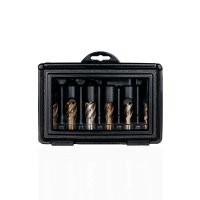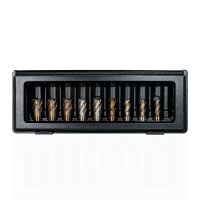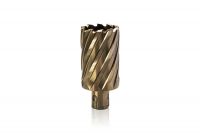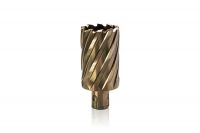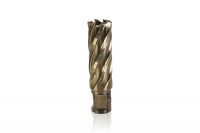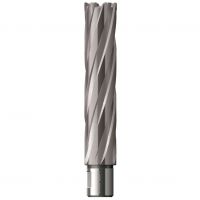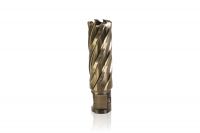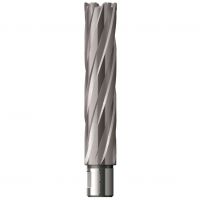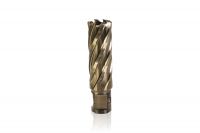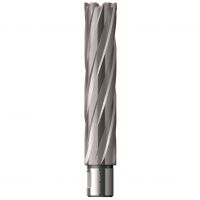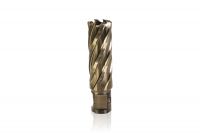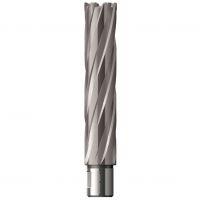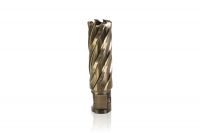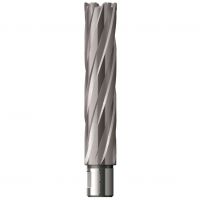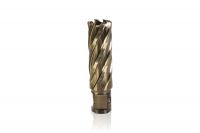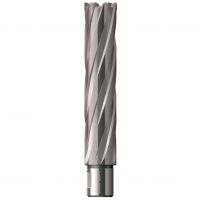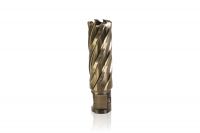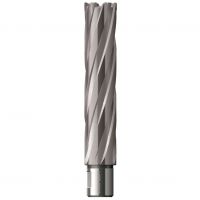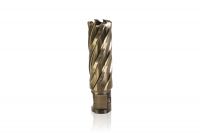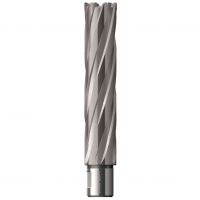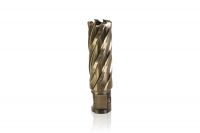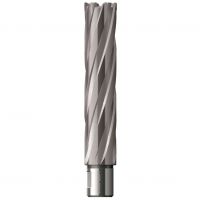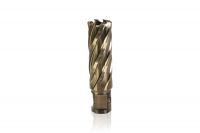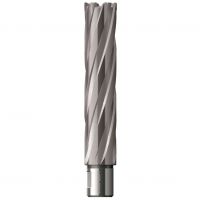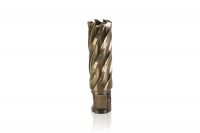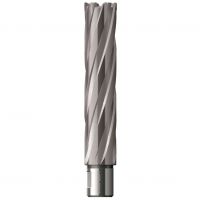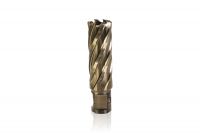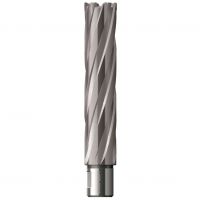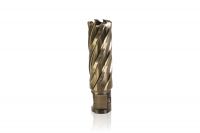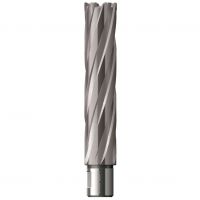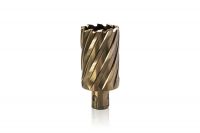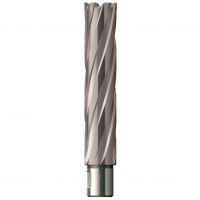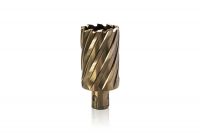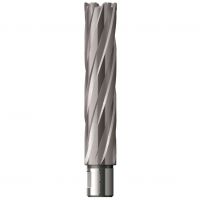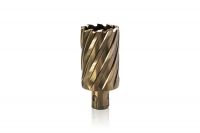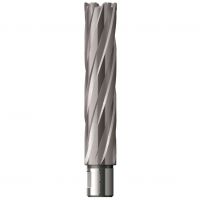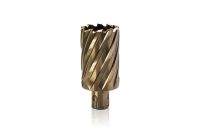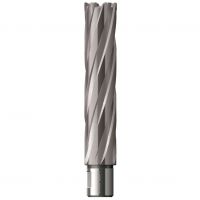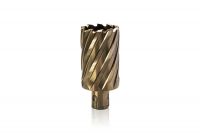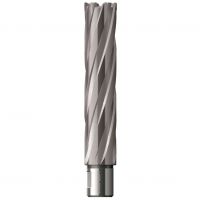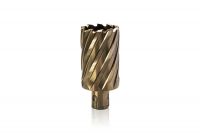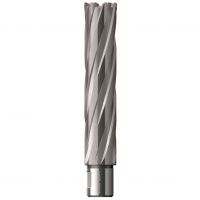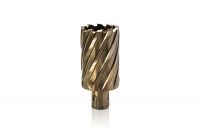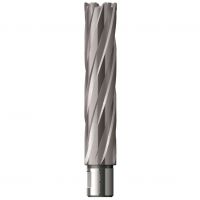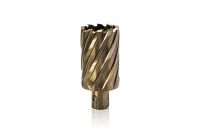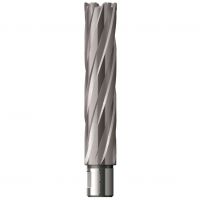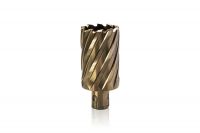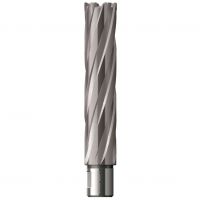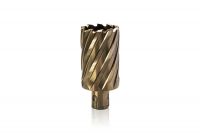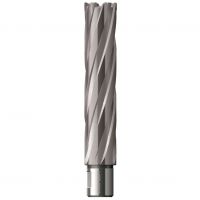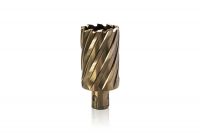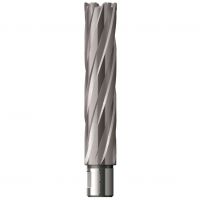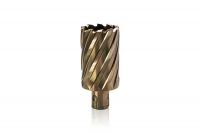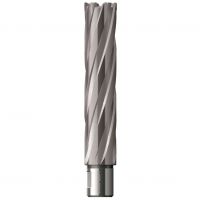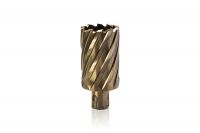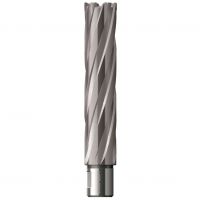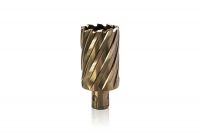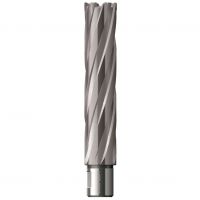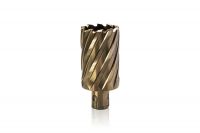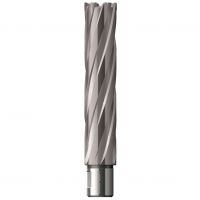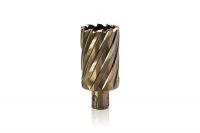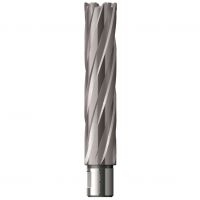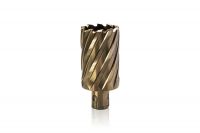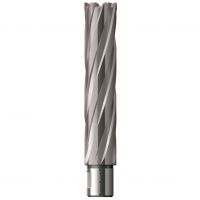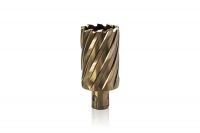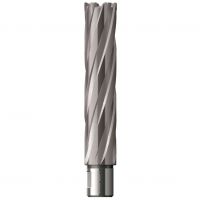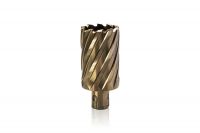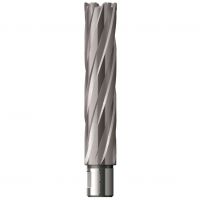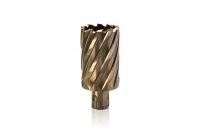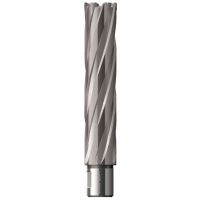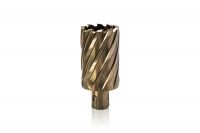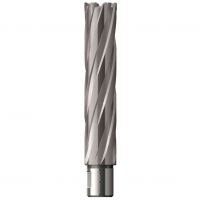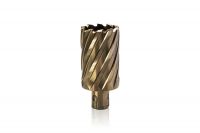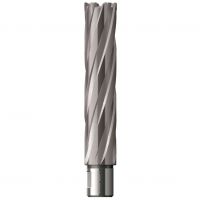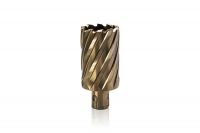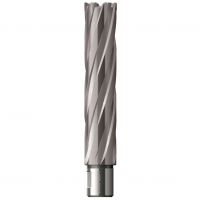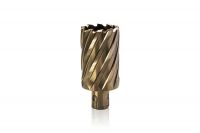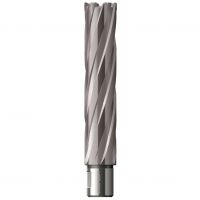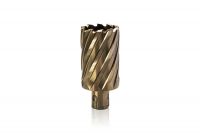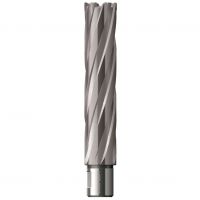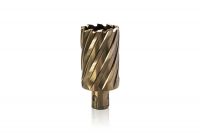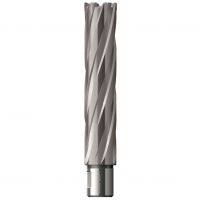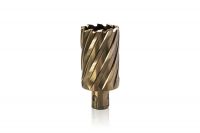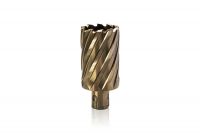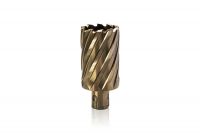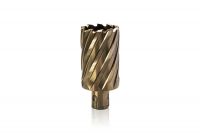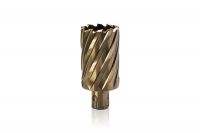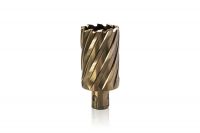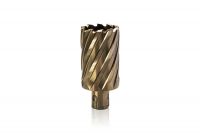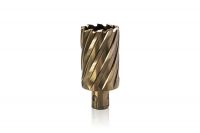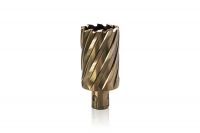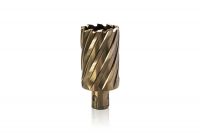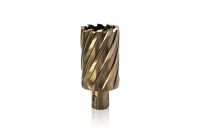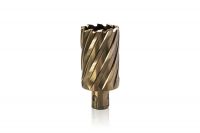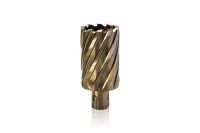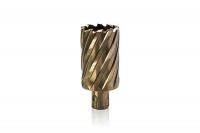Training staff to run your mag drills to ensure optimum cutter life and performance has evolved into a sometimes complex topic – but there are a few basics which will make a major difference. This article is designed to shed light on some of those factors.
How fast should I run my cutters?
Often, the biggest constraint to selecting the ideal cutter speed lies in the single and 2-speed machinery which is still prevalent in our NZ market. If you have a single speed machine, your only avenue to optimum cutter life when using larger cutters or drilling hard materials, is to use a carbide tipped cutter and/or copious quantities of lubricant. For machines with adequate speed control, broadly speaking, the harder the material or the larger the cutter diameter, the slower you should run the spindle speed. Example speeds for mild steel drilling using HSS cutters are: 14mm – 550rpm 25mm – 300rpm 50mm – 160rpm. For high tensile steels, the speed should be just over 1/3rd of the mild steel value. By contrast, when using carbide tipped (TCT) cutters, you may approximately double the spindle speed.
What down feed rate is optimum?
Down feed rates are heavily influenced by the diameter of the hole, condition of the cutter including the cutter wall thickness and tooth geometry, lubrication and material type, so we recommend the following ‘common sense’ points:
- Each cutter tooth is capable of removing a given amount of material per unit of time, and high feed pressure doesn’t increase metal removing capacity! Cutters should feed through the material easily with gentle to moderate pressure – if they don’t, they are probably up for re-sharpening or replacement – or else you need a harder toothed cutter for the material.
- Too light a feed rate, especially on harder metals can result in the cutter teeth rubbing more than removing material, and this can lead to heat hardening very quickly. Likewise a cutter going blunt will give slower performance which can also cause heat hardening, hastening the cutters’ demise.
- Cutter ‘run in’. New or freshly sharpened cutters have a supersharp edge which can easily grab and smash the cutter or chip the teeth. For the first few holes, run the cutter in by reducing the usual feed rate – only very light feed pressure is required.
When should I sharpen my cutters?
As a rule of thumb, when the feed rate under gentle to moderate pressure is down to half that of a sharp cutter, you should consider getting your cutter sharpened. It is false economy to either push the cutter harder, risking breakage, or to allow your productivity to get lower & lower. As a cutter goes blunt, the wear on the teeth increases exponentially – so running that cutter for 500 holes instead of 250 will result in much more than double the grinding work for the sawdoctor. A keen eye will be able to see wear as a shiny patch reflecting the light on the working corner of the teeth. This is usually visible before the cutter actually feels blunt to the touch and is useful to catch wear earlier. It is worthwhile mentioning that cutters are not infinitely sharpenable – in the centre core a few millimeters up from the teeth, there is a line which marks the end of the centre clearance. Sharpening up to or beyond this line means your slugs will get stuck!
What lubrication should I use?
Firstly, any sort of lubrication is better than none – even water has some slippery qualities about it! For best penetrating lubrication we recommend a high quality, thin neat oil like Altdorf CutNCool, and this is essential to good cutter life if working with hard/tough materials. If you are working vertically or upside down, sometimes a lubricating paste can be more practical. Water soluble oils can also be used and are cheap, but in our opinion don’t provide enough lubricity for most applications and will likely end up costing more in cutters. If you have a situation where you can’t use any lubrication we would recommend using carbide tipped cutters which are more heat resistant, however even they will still give longer life when well lubricated.

